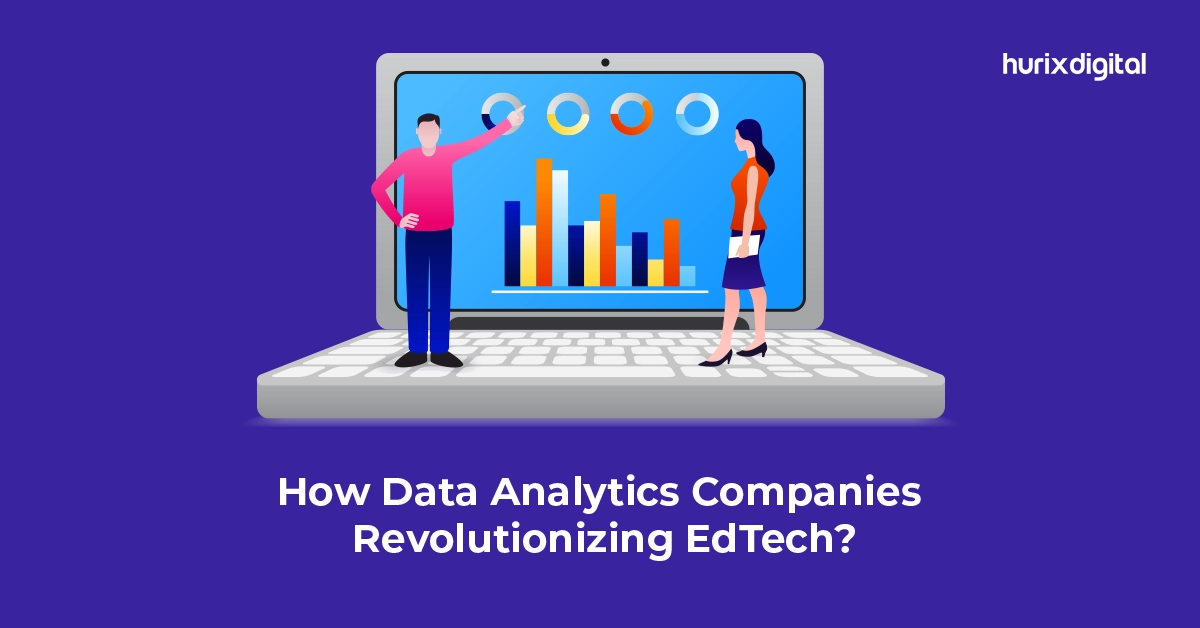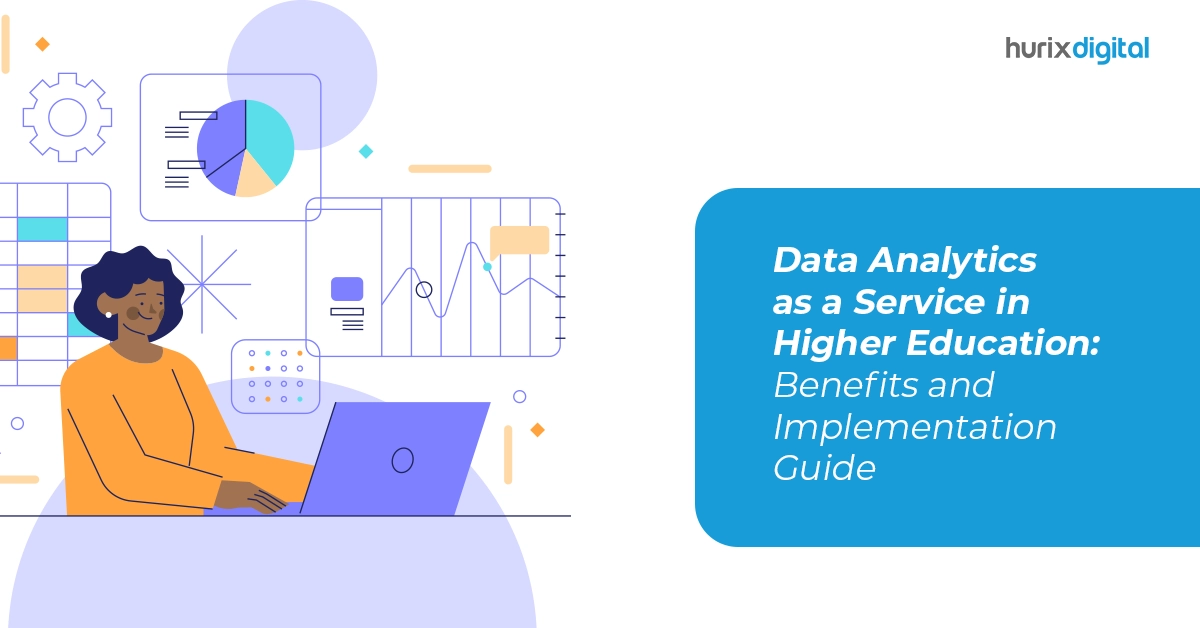
Boost Business Profitability with Data Analytics as a Service
Summary
This blog details how data analytics aids businesses in decision-making, optimizing operations, increasing profits, and gaining market advantages. It discusses processes, types, technologies, and benefits.
Data is everywhere, and running a business without using data analytics is incomprehensible. Today, in the world of Generative AI and social media platforms, businesses are making their products and services available across the globe. Using advanced analytics, they can understand the needs of their customers, anticipate future trends, and optimize their workflow and decision-making capabilities.
This benefit is not just limited to mobile devices; data analytics is also extended to devices and servers that use emerging technologies. These include cloud computing, AI, machine learning, IoT, and edge computing.
Businesses must make the most of data analytics to monitor business performance and manage costs.
Let us learn more about the relevance of enhancing data analytics solutions in this guide!
Table of Contents:
- Relevance of Data Analytics in Businesses
- Data Analytics – How Does it Work?
- Different Data Analytics Types
- Key Technologies Surrounding Data Analytics Works
- Key Benefits of Prioritizing Analytics as a Service in Business
- Conclusion
Relevance of Data Analytics in Businesses
Data Analytics as a Service business model is important for your business in the following ways:
- Data Analytics as a Service empowers businesses to make evidence-based decisions and delve deeper into customer behavior. It becomes easier for leaders to analyze their needs.
- Data analytics helps rectify inefficiencies, reduce costs, and enhance productivity.
- Companies that use data analytics can work according to trending market updates. This helps them predict customer choices and work faster than their competitors.
- Data Analytics as a Service offers scalable solutions and provides flexibility in managing data without significant investments.
Additional Insights
- Today, the global Big Data and Analytics market is worth $274 billion, and more than 2.5 quintillion bytes worth of data are generated each day. The value is expected to increase to $655.53 billion.
- Four out of 10 organizations use big data analytics, and 87.8% of businesses have enhanced their data investments in 2022.
- 82% of businesses using advanced analytics saw positive revenue growth over the past three years.
Also Read: A Guide to Predictive Analytics for Business Excellence
Data Analytics – How Does it Work?
Several industries are using Data Analytics. Let us take a look:
- Travel brands use data analytics to enhance customer experience, reduce risks, get better projections and insights, and frame more competitive pricing structures.
- 72% of manufacturing businesses rely on advanced analytics to improve productivity.
- The big data analytics in education market was valued at $13.58 billion in 2020 and is expected to reach $57.14 billion by 2030, at a CAGR of 15.3%.
- Big Data analytics for the healthcare industry is expected to reach $79.23 billion by 2028.
- Big Data in Supply Chain Management is expected to cross $7.1 billion globally by 2027.
Here is how different business leaders use data analytics:
Step 1: Collecting Data
The first step is to collect data from various internal and external sources. These sources can be customer interactions, social media comments, testimonials, surveys, or financial records. Here are some tips:
- Identify Relevant Data Sources
- Invest in Data Collection Tools
- Establish Data Governance Practices
- Ensuring Data is Relevant
Step 2: Organizing Data
Raw data is often unstructured. Between 80%- 90% of the total volume of data generated is unstructured, and 95% of businesses find it a major challenge.
Data analysts clean and organize this information. The process includes removing errors and ensuring consistency. Here are some tips:
- Data Cleaning: Data analysts must organize the data to make it accurate for analysis.
- Data Validation: Validate data to ensure it is relevant. Cross-check it from different sources or compare it to industry standards. This will help maintain accuracy.
- Focus on Data Quality: High-quality data is crucial for reliable insights.
Step 3: Transforming and Analyzing Data
Data is transformed into formats suitable for analysis, and then several techniques are applied to uncover trends and patterns. Some of these techniques include:
- Choose the Right Analytical Techniques.
- Leverage Data Visualization Tools.
- Embrace Storytelling with Data.
Step 4: Presenting Insights
After the findings are noted, they are translated into comprehensible visual reports. This is done so that all stakeholders can easily access them. Here are some tips:
- Customize your presentation style for different audiences.
- Present data in an actionable way that encourages a data-driven culture.
- Employees should be encouraged to ask questions.
- Business practices should be improved consistently based on data insights.
Different Data Analytics Types
Here are some important types of data analytics:
1. Descriptive Data Analytics
This summarizes and describes data and reveals what happened. It includes basic statistics and visualizations, which answer questions like “What happened?” and “How much?”
2. Diagnostic Analytics
This type explores why something happened. It uncovers causes and hidden relationships through data mining.
3. Predictive Analytics
This type uses historical data and statistical models to forecast future trends. Businesses can make informed future decisions using this type.
4. Prescriptive Analytics
This type predicts future outcomes and also recommends optimal actions.
Key Technologies Surrounding Data Analytics Works
Key technologies involved include:
- Cloud Data Analytics: Enables scalable cloud storage, processing, and analysis of large data volumes without heavy infrastructure investment.
- Enterprise Data Management: Enhances data utilization and leads to data-driven decisions.
- Data Mining: Extracts valuable insights using AI-empowered techniques on various data types.
- Data Storage: Utilizes technologies like cloud storage for digital data retention.
- Data Lake: Repositories that store and process unstructured data. This is done in large volumes, and the aim is to reduce costs.
- Data Warehouse: This type stores structured data in relational databases. It then loads and processes this data through advanced analytics processes.
- Text Mining: Analyses unstructured text data and retrieves valuable information from it.
Key Benefits of Prioritizing Analytics as a Service in Business
Data analysis service empowers businesses to make informed decisions and optimize various aspects of their operations. Here are some key benefits:
1. Gain Greater Insight into Target Markets
Data analytics solutions help businesses in:
- Understanding Customer Behavior: Access to digital data reveals customer preferences. By analyzing this data, businesses can identify trends and customize products or services to meet these needs.
- Improving Customer Satisfaction: In-depth knowledge of customer behavior helps improve loyalty and boost sales. Ignoring these insights can lead to losing customers to competitors who better understand their audience.
2. Boosting Revenue
Analytics as a Service helps businesses understand which products resonate with specific customer segments. This allows sales reps to focus their efforts more effectively. Historical transaction data provides insights into buying behaviors, which further guides sales strategies to prioritize high-value products.
3. Reducing Operating Costs
Data analysis service identifies wasteful processes and areas needing more funding. As business leaders, you can assess cost-cutting opportunities and adopt technologies that reduce operational expenses.
4. Improving Operational Efficiency
Analyzing customer data and feedback reveals opportunities for optimization. Businesses can refine strategies to maximize profits. Data analytics enables faster and better-informed decisions which can greatly mitigate the reliance on intuition. This proactive approach helps identify opportunities and avoid ineffective strategies or misguided investments.
5. Risk Mitigation
Data analytics plays a crucial role in risk and enterprise data management. By analyzing historical data, businesses can identify patterns and vulnerabilities. This can help them develop strategies to mitigate risks and ensure compliance.
Let us take Meta as an example. Meta uses cloud data analytics to detect and respond to cybersecurity threats, which ensures a secure platform.
6. Enhancing Marketing Efforts by Better Targeting
Analytics as a Service helps determine the most effective ways to advertise products, optimizing spending and maximizing impact. Collecting accurate information saves money and enhances marketing efforts. It provides insights into customer behavior and market conditions. Predictive analytics and machine learning forecast future market trends, helping companies stay ahead.
For example, Shopify uses data analytics to measure campaign performance in real time. This helps the brands optimize budget allocation and enhance customer satisfaction through targeted strategies.
7. Gaining Competitive Advantage
Data analytics provides deep insights into customer behavior, enhancing the ability to meet customers’ needs and increase demand. Predictive modeling helps companies strategize future investments and improve operational efficiency.
Understand how Amazon uses data analytics to provide personalized recommendations, efficiently manage inventory, manage enterprise data, and optimize pricing. This enhances customer satisfaction and maintains a competitive edge.
8. Identifying New Product and Service Opportunities
Data Analytics as a Service helps businesses understand their audience, anticipate market needs, and identify product or service gaps. Real-time feedback and competitor analysis allow companies to stay competitive and meet changing consumer demands. Cloud data analytics helps leaders use data visualization tools to analyze outcomes and refine processes.
Check out EXCLUSIVE: Hurix Digital Seamlessly Stabilizes a Leading Utilities Provider’s IT Infrastructure and Services
Conclusion
Data Analytics as a Service empowers businesses to make data-driven decisions and solve problems. Enhance your business productivity by using advanced data analytics solutions today. Business leaders must utilize cloud data analytics services to transform their businesses, which can help them drive long-term growth. Adopting data analytics is essential so businesses can unlock new opportunities.
Contact Hurix Digital to discover how Data Analytics as a Service can help your business thrive. Learn how to employ advanced analytics techniques like machine learning and use data analytics to drive your business growth.
Get in touch with us today!

Currently serving as the Vice President of Technology Delivery Operations at HurixDigital, a prominent global provider of digital content and technology solutions for publishers, corporations, and educational institutions. With over 16 years of experience spanning EdTech and various domains, I hold certification as a SCRUM Product Owner (CSPO). My expertise includes operations, finance, and adept people management skills.







